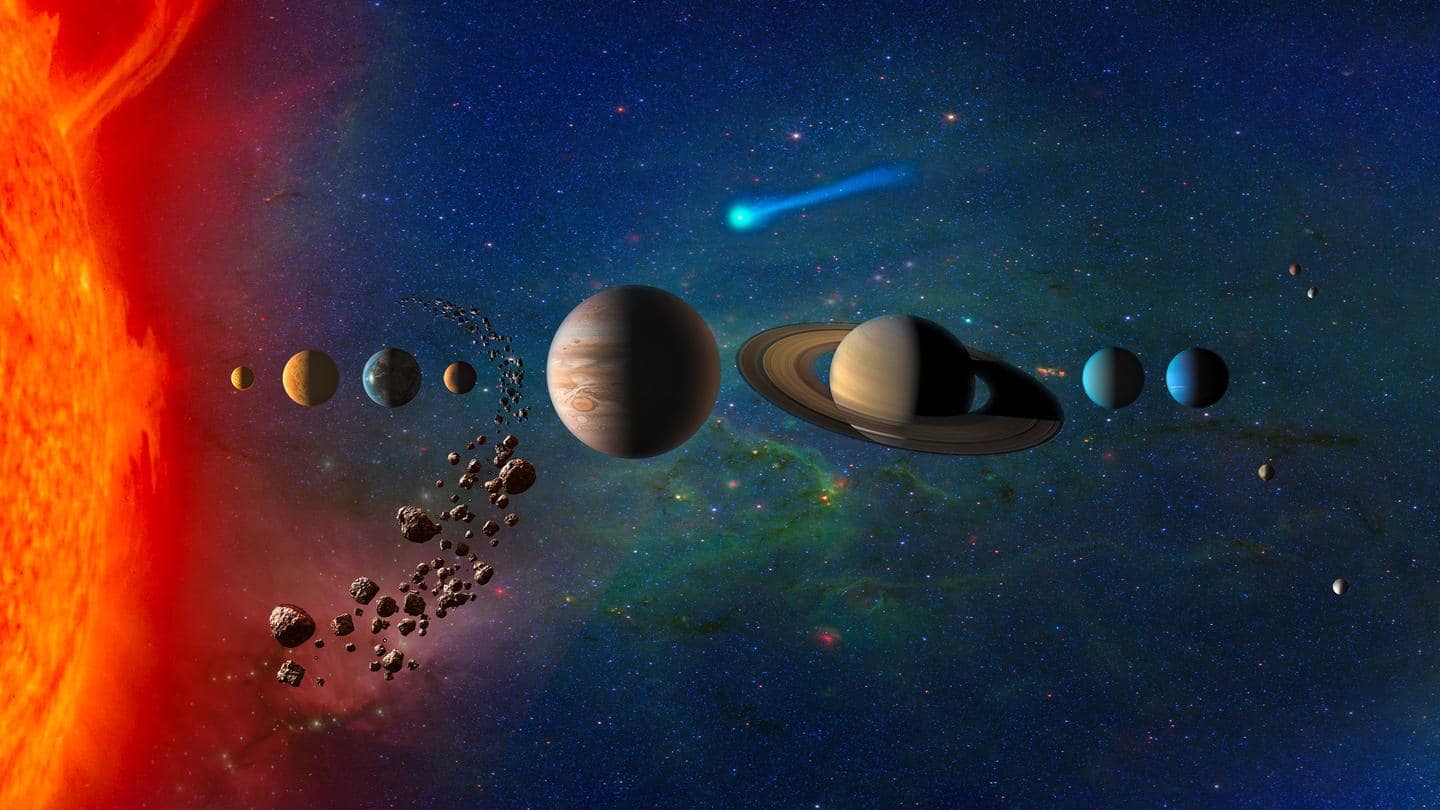
Why inner solar system spins slower than it should
What's the story
Ever wondered why the inner solar system spins slower than the laws of modern physics dictate? Well, researchers at the California Institute of Technology (Caltech) might have discovered the answer to the riddle.
The mystery lies in the motion of charged particles evident from simulations of an accretion disk - a narrow disk of gas and dust spiraling around young stars.
Context
Why does this story matter?
The researchers at Caltech have found that angular momentum is not conserved in the classical sense at the subatomic level. This anomaly makes a huge difference when applied to the scale of the universe.
Earlier, magnetic fields generating turbulence or friction between various regions of the accretion disk were cited as the reason behind the slowdown. However, these now seem to be disproved.
Definition
What is an accretion disc?
Accretion discs spiral around young stars and contain leftover star-forming material which is a fraction of the star's mass. This is where planets and their satellites are formed.
In our solar system, the inner part of the disc extends up to the asteroid belt and comprises the terrestrial planets.
However, this portion spins slower than predicted by the law of conservation of angular momentum.
Information
What is the issue?
The law of conservation of angular momentum states that the inner part of the accretion disk should spin faster as the material spirals inward toward the star. However, the inner solar system defies this law, leaving scientists puzzled.
Process
How was the accretion disc simulation made?
Computer models were used to simulate the collision of 1,000 charged particles and 40,000 neutral ones in magnetic and gravitational fields.
Researchers found that the interaction between neutral atoms and charged particles results in positively charged ions (cations) spiraling inward, while the negatively charged ones (electrons) move outward.
However, the neutral particles spiral inward to the center as they lose angular momentum.
Properties
The disc acts like a battery
The accretion disk serves as a massive battery, with a positive terminal and a negative one.
As cations are positive and electrons negative, their collision increases the canonical angular momentum (ordinary angular momentum plus an additional quantity depending on the particle's charge) of both.
However, neutral particles lose momentum on colliding with charged particles. This balances out the increase in the canonical angular momentum.